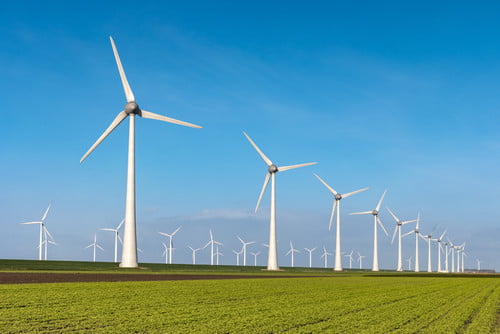

Energy
This Is Why You Still Can’t Just Have A Wind Turbine On Your House
With novel high-efficiency turbines making waves of improvement to harnessing right in the middle of the cityscapes, we still have a long way to go before turning wind energy into the next home solar panel. While their odd shape, low noise, and relatively cheaper build, these things are expected to power factories and electric vehicle charging stations in cities.
But why these types of turbines, exactly? What stops green-conscious consumers from getting one of these installed in their own lawns? The problem is in scale. Relative scale.
Windmills Are Supposed to Be Big…
…And they need to be, too. Traditionally, wind turbines need to be larger so they can catch more wind. More precisely, it’s because they need to catch the faster-moving wind in higher altitudes where there are not too many hills and trees that could block the flow. This makes the turbines spin faster, making more energy over time.
And if you are going to put a big turbine in the air, it works best to give it a large propeller too. This way, you can take advantage of the large area below the turbine where the wind just passes through the mast.
They Are Also Noisy
Now here’s another problem with windmills. They tend to be really noisy. There’s a loud, swishing sound as the air passes through the blades. The relatively smaller machinery inside gets noisy too. All those gears that spin the generator and point the rotor to the wind will have a constant creaky sound that will be annoying at best.
The best modern wind turbines get to around 100 dB loud. In comparison, the stuff you could call “normal noise” like living room music and passenger cars are at around 70 dB. At 80 dB, because the Decibel scale is logarithmic, you get something as loud as a milling machine which is twice as strong as those at 70 dB.
Something at 100 dB will be eight times as loud as normal noise. Just imagine a jet engine taking off, but with the sound never stopping – unless the wind stops moving, of course.
What About Smaller and Less Noisy Designs?
Of course, like the design of these high-efficiency turbines, these things will be much quieter while taking advantage of the wind right above the rooftops of high-rise buildings. They won’t be as noisy and have more efficiency because the generated electricity does not have to travel through large cables. For instance, EV charging stations can have these bundled together next to solar roofs to produce more electricity.
But for the regular household home? Perhaps not. Before Sirocco Energy, there have been plenty of other designs proposed to make wind a viable energy source in the regular house. Vertical-axis wind turbines make a good example. They don’t need a yaw or a turning mechanism to point them to the wind. This makes them better when wind flies in different directions and reduces the amount of space they take up.
In fact, they could have been even more efficient than the existing turbines’ design. It’s just that the closer the wind is to the ground, the more turbulent the wind. This makes the wind swirl around more when it hits walls, roofs, trees, and other obstacles.
Vertical-axis wind turbines were made to take advantage of this problem. They can take wind from the front, back, and sides without needing to turn. But they can’t take anything from the top and bottom. Over time, the turbulence from these sides will wear them out and make them financially non-viable.
In other words, you will need plenty of cash to make your own windmill that might break down long before you get a return on the investment. But does this mean that wind energy will never become useful in cityscapes? Are the companies pioneering them just wasting their R&D on a break-even investment?
Perhaps so, or perhaps not. Over time, we will get stronger and quieter turbines thanks to the people who invest their money in these and the people who work on them. Whether or not their invention will be the next best thing, however, will depend on how their design beats the rest where they have failed.


 Environment10 months ago
Environment10 months agoAre Polymer Banknotes: an Eco-Friendly Trend or a Groundswell?

 Environment11 months ago
Environment11 months agoEco-Friendly Home Improvements: Top 7 Upgrades for 2025

 Features9 months ago
Features9 months agoEco-Friendly Cryptocurrencies: Sustainable Investment Choices

 Features10 months ago
Features10 months agoEco-Friendly Crypto Traders Must Find the Right Exchange

















